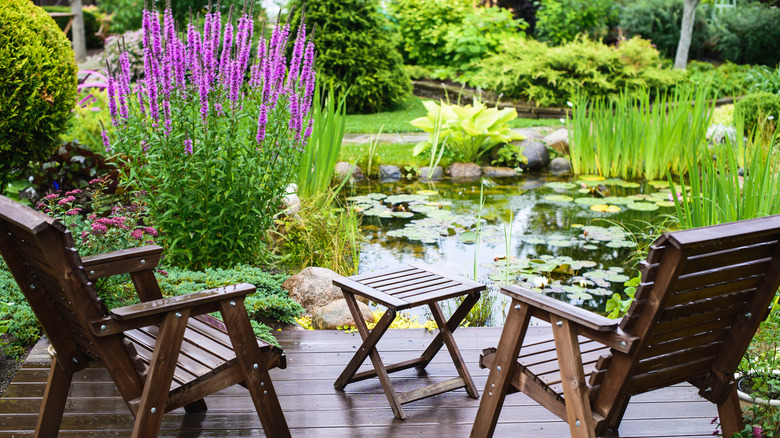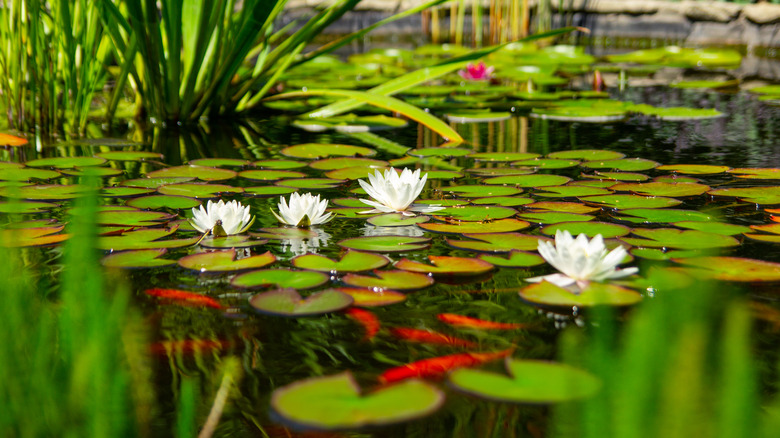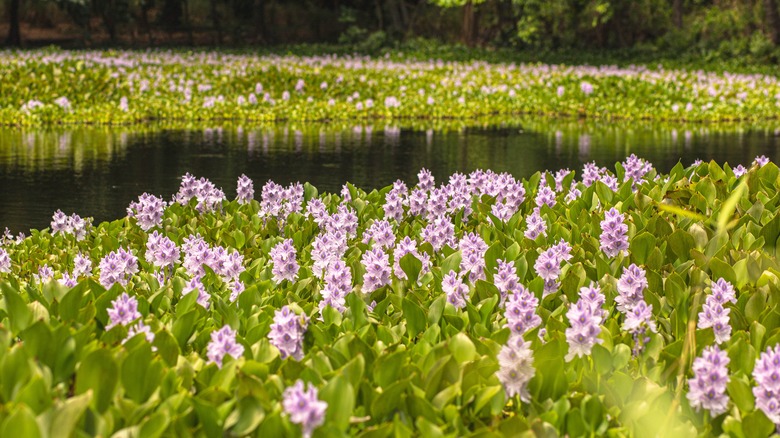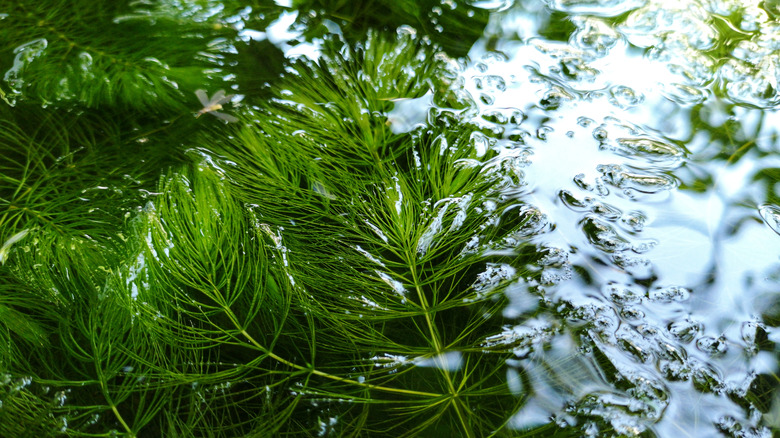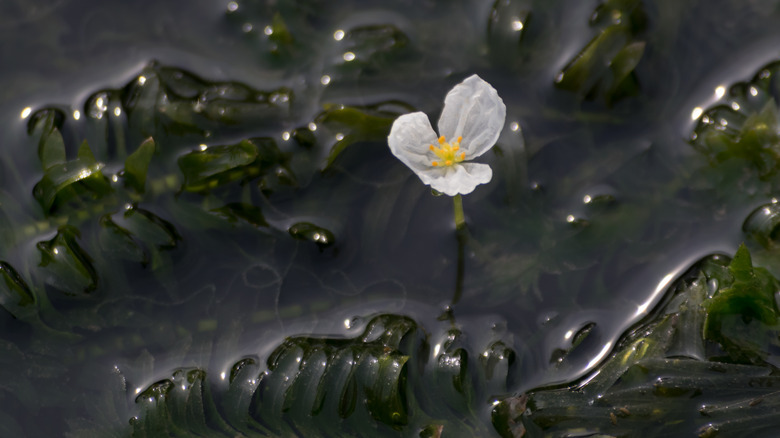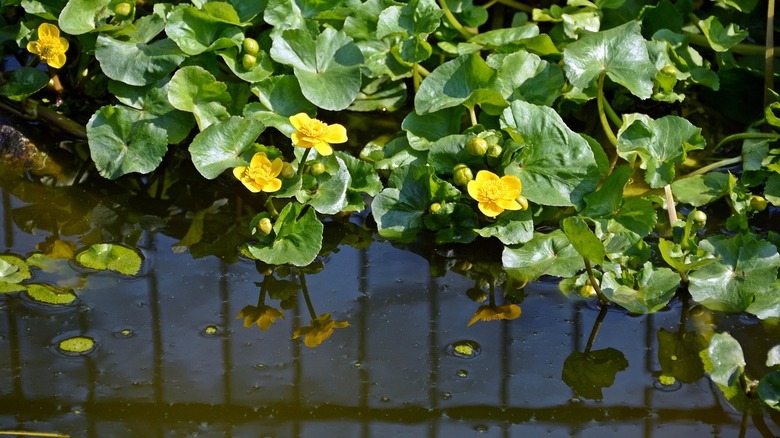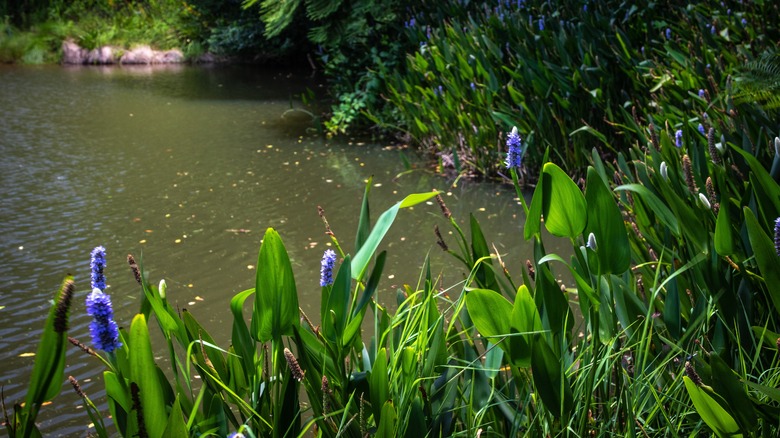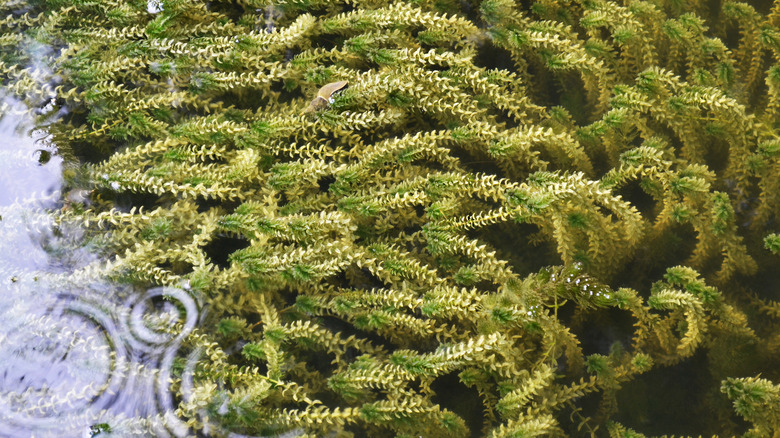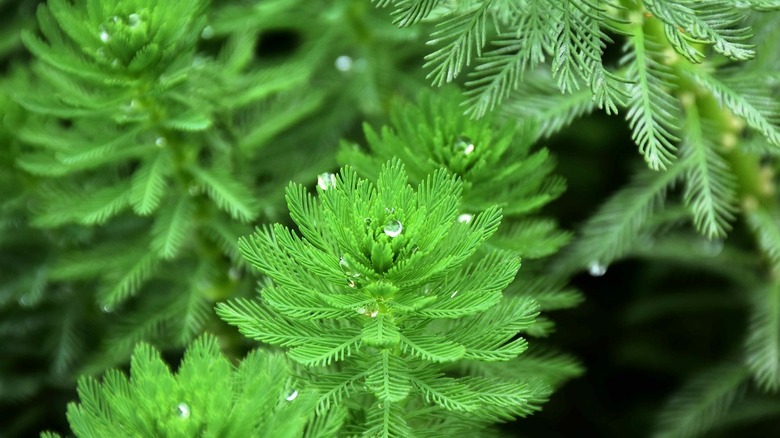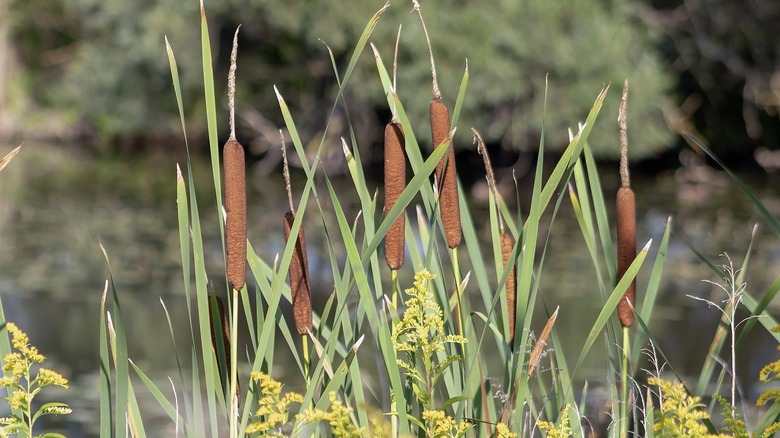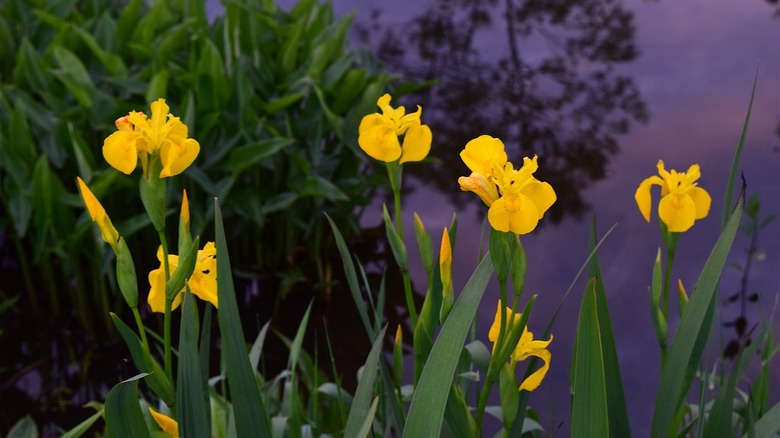Plants You'll Want To Keep In Your Pond
A picturesque pond adorned with lush greenery and vibrant blooms is a backyard sight to behold. But, beyond their aesthetic appeal, plants in a pond offer important, additional benefits as well; namely, aquatic plants play a crucial role in enhancing the ecosystem of a pond and its overall water quality.
To maximize the benefits of plants in your pond, it's essential to have a diverse selection of plant types. Floating plants, for example, provide shade and shelter for pond fish while adding beauty to the water's surface, whereas submerged plants oxygenate the water and create hiding places for fish. Marginal plants, meanwhile, provide visual interest along the pond's edge and help to stabilize the banks, while oxygenating plants, such as hornwort, contribute to a healthy ecosystem by producing oxygen and controlling algae growth.
When building a pond, it's key to explore the different types of pond plants there are so you can better decide on which you'll want to include and keep in your own pond oasis. Here below are 10 pond plants you can start your research with.
1. Water lilies
Water lilies (Nymphaeaceae) are renowned for their enchanting beauty, with vibrant blooms in an array of colors that grace the water's surface. However, these water plants provide more than just visual appeal. They also offer a safe and comfortable habitat for fish, and their broad leaves help to reduce algae growth in ponds by limiting the amount of sunlight that reaches the water.
2. Water hyacinths
These fast-growing plants can cover large areas of a pond with their lush foliage while adding a pop of color with their purple blooms. Water hyacinths (Eichhornia crassipes) have excellent filtration properties, enabling them to absorb excess nutrients, such as nitrogen and phosphorus, and improve a pond's overall water quality. It can grow up to 3 feet tall.
3. Hornwort
Known for its lush, green foliage, hornwort (Anthocerotophyta) — sometimes called coon's tail — is a popular choice for ponds due to its oxygenating properties. This submerged plant releases oxygen into the water through photosynthesis to the benefit of the pond's ecosystem. Hornwort also provides hiding places for fish and requires minimal maintenance, making it a convenient and beneficial addition to any pond.
4. Anacharis
With its rapid growth and efficient nutrient absorption, anacharis (Egeria densa) helps to control algae growth and maintain water clarity. The oxygenating, aquatic plant adapts well to different water conditions, making it suitable for a variety of backyard ponds. If you happen to have fish in your pond, you'll also want to consider keeping this anacharis, as the pond plant naturally creates hiding places for fish.
5. Marsh marigold
With its bright yellow flowers and glossy green leaves, the marsh marigold (Caltha palustris) adds a cheerful and vibrant touch to pond landscapes. This plant, which is part of the buttercup family, thrives in shallow water, making it a perfect choice for pond edges and boggy areas. Besides its sunshiny appearance, marsh marigold helps to stabilize pond banks, preventing erosion and maintaining the shoreline's integrity.
6. Pickerelweed
Pickerelweed (Pontederia cordata) is a striking plant with tall spikes of purple-blue flowers that add a captivating visual element to ponds. It serves as a habitat for beneficial insects like butterflies and dragonflies, contributing to the overall biodiversity of the area. Pickerelweed is known as an emergent plant, meaning it shoots out from the water. In a pond, only the plant's leaves and flowers will be visible above the water's surface.
7. Waterweed
Waterweed (Elodea) is a highly efficient oxygenating plant for ponds, particularly during warm summer months when oxygen levels can decline. Through its release of oxygen, the plant helps to promote a healthy environment for fish and other aquatic organisms. Another reason you will want to keep waterweed in your pond is the plant's ability to reduce algae overgrowth. There are six species in the Elodea genus.
8. Parrot's feather
Parrot's feather (Myriophyllum aquaticum) is an attractive pond plant with delicate feather-like foliage that adds a unique and eye-catching aesthetic to the water. Parrot's feather also serves as an oxygenating plant, contributing to a healthy pond ecosystem. It provides shade and shelter for fish, creating a more natural and comfortable habitat. The plant's stems can reach up to 5 feet, and it grows fastest in full-sun conditions.
9. Cattails
With their long, slender leaves and iconic brown seed heads, cattails (Typha) create a natural and captivating visual display. They attract wildlife, providing shelter and nesting sites for birds and a habitat for aquatic creatures. They also contribute to natural water filtration, as their roots help to absorb excess nutrients and purify the water, making them a valuable addition to any pond ecosystem.
10. Water iris
With its elegant and graceful appearance, the water iris (Iris pseudacorus) adds a touch of refinement to any water feature. Planting water irises in a pond not only adds to its beauty but also helps to prevent erosion by securing the banks. These flowering plants also create a home for beneficial insects, which increases the biodiversity of a pond's ecosystem and is another reason why you'll want to include and keep them in your pond.
